Things to do in Colombo
Most visitors holiday in Colombo for a short time while on their way to or from one of the beautiful Sri Lankan beach resorts, as the capital city, with its frenetic traffic and general chaos, is a little too much for most to handle. Colombo is, however, worth a look, offering colour and some interesting attractions, such as the national museum, the Pettah bazaar and some lovely temples. People who travel to Colombo also enjoy the Galle seafront and delicious local cuisine.
Colombo is home to some fascinating places of worship for Buddhists, Christians and Hindus. The Seema Malaka Temple, in the middle of the lovely Beira Lake, is a tranquil place where visitors feel as though they are far removed from the rowdiness of the city. The Isipathanaramaya Temple is another Buddhist gem in Colombo, feeling part museum and part temple. St Anthony's Church is a firm favourite with Christian locals, who believe that the saint answers all prayers made in the church. The old Dutch Wolvendaal Church, though in need of some external maintenance, is full of history, with some interesting Dutch grave stones.
No matter what time of year visitors choose to travel to Colombo, the weather will be hot and humid. It is probably wisest to avoid the monsoon rains, however. These occur between May and August, and October and January.
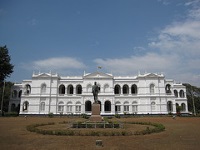
Colombo National Museum
Sri Lanka's oldest museum was established in 1877 and today boasts a massive collection of antiques and objects d'art, encompassing the cultural heritage of the island. Exhibits in…
Colombo National Museum
Sri Lanka's oldest museum was established in 1877 and today boasts a massive collection of antiques and objects d'art, encompassing the cultural heritage of the island. Exhibits include artefacts from archaeological sites all over Sri Lanka, and more than 4,000 ancient palm leaf manuscripts. Sri Lanka boasts some remarkable ancient sites and this historical wealth is reflected in the museum. Among the exhibits is displayed the regalia of the Kandyan Kings dating back to the 17th century. Although the museum is not quite world-class, it does contain some genuine treasures and should fascinate visitors interested in the art and culture of Sri Lanka. The collection is housed in an imposing and attractive white building, and is set in lovely grounds. Alongside the archaeological museum is the Natural History Museum, which features the island's fauna and flora in dioramas. The dual museums are a good introduction for visitors interested in discovering the culture and history of the island. Photographs are allowed in the National Museum, but only if visitors pay a small extra fee for a photography permit. There is a cafe and a craft shop in the museum grounds as well.
Website www.museum.gov.lk
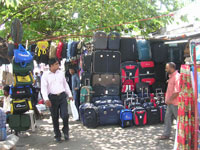
Pettah
Colombo's bazaar district, Pettah, presents a real treat for shopaholics, who can wander through the hustle and bustle of whole streets dedicated to selling a particular type of me…
Pettah
Colombo's bazaar district, Pettah, presents a real treat for shopaholics, who can wander through the hustle and bustle of whole streets dedicated to selling a particular type of merchandise, from local handicrafts to fresh produce. The markets will not be to everybody's taste; Pettah is a sensory overload and the sheer quantity of merchandise, and crowds of people, make it difficult to find good quality items. Bargaining is essential as foreigners tend to be overcharged. The quoted price will be at least double what locals would be expected to pay. The area was once an exclusive residential area filled with stately homes and large gardens in gas-lit streets. A relic of the colonial era, the Dutch House Museum, is open to the public on Prince Street. The mansion house dates from the 17th century and was the residence of Count August Carl Van Ranzow. It has now been restored and stands among the traders and boutiques as a museum displaying the life and times of the Dutch occupation, its exhibits including furniture, ceramics, coins and all the trappings of daily life at the time. Another landmark is the Jami Ul Alfar Mosque, one of the oldest mosques in Colombo.
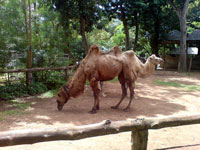
Dehiwala Zoological Garden
Colombo's zoo has a fine collection of animals, birds, reptiles and fish from all over the world but, in particular, showcases the fauna of the island. The complex includes an aqua…
Dehiwala Zoological Garden
Colombo's zoo has a fine collection of animals, birds, reptiles and fish from all over the world but, in particular, showcases the fauna of the island. The complex includes an aquarium, displaying more than 500 varieties of aquatic life. There is also a walk-through aviary, reptile enclosure and butterfly park. One of the most popular attractions at the zoo is the daily elephant show, which takes place at about 5.15pm. Another favourite feature is the sea lion show, which is great fun for kids. Animals in the park include hippos, flamingos, kangaroos, lemurs, monkeys, orangutans, leopards, lions, otters, raccoons, rhinos, giraffes and tigers. The zoo has a good selection of animals and receives great reviews from some visitors, and also places an emphasis on animal conservation and welfare.
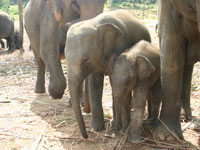
Pinnawela Elephant Orphanage
Among the green hills of Kegalle, about 50 miles (85km) from Colombo on the road to Kandy in the hill country, a herd of about 60 elephants live in the Pinnewela Elephant Orphanage…
Pinnawela Elephant Orphanage
Among the green hills of Kegalle, about 50 miles (85km) from Colombo on the road to Kandy in the hill country, a herd of about 60 elephants live in the Pinnewela Elephant Orphanage. This popular attraction, established as a sanctuary covering 25 acres of lush forest by the Sri Lankan Government in 1975, is unique. Its purpose is to breed, feed, nurse and house young elephants lost or abandoned by their mothers. Visitors are invited to observe and assist the baby elephants as they are fed from giant feeding bottles, before the pachyderms are lead down to the river for their daily baths at 10am and 2pm. Although extra money can be paid to ride, swim with and feed the elephants the main attraction for many people is simply watching them at play with each other in the river from the banks. The sanctuary has received both praise and censure from animal rights groups, for various reasons, and although most tourists rave about the attraction, some visitors complain that the animals don't have more freedom. The admission costs go entirely towards maintenance of the sanctuary and feeding the animals and most reports conclude that the elephants are well cared for.
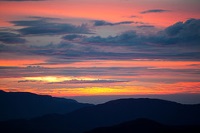
Adam's Peak
The legendary mountain, towering 7,358 feet (2,243m) over the island of Sri Lanka, known as Sri Pada or Adam's Peak, has been venerated as a place of pilgrimage and worship for all…
Adam's Peak
The legendary mountain, towering 7,358 feet (2,243m) over the island of Sri Lanka, known as Sri Pada or Adam's Peak, has been venerated as a place of pilgrimage and worship for all major faiths in the country for generations. The holy mountain bears what seems to be the imprint of a foot on a rock on its summit. Depending on their faith pilgrims believe the print was left there by Buddha, Lord Shiva, St Thomas, or Adam after he was expelled from Eden. Whether visitors believe the footprint to be holy or not the climb to view it, protected in an enclosure at the pinnacle of the peak, is well worth it for the panoramic views of tropical forest afforded from the top. The stairway up the mountainside is believed to be the longest in the world and climbers are entitled to ring the bell situated at the top once they have made the journey. It is particularly special to climb the peak for sunrise, which requires beginning the climb at about 1am (depending on the month and time of sunrise). Soon after dawn, the rising sun casts a perfect triangular shadow of the mountain across the surrounding landscape. Many smaller peaks rise out of the dense jungle far below and watching the beautiful landscape reveal itself is a profound experience.
Website www.sripada.org
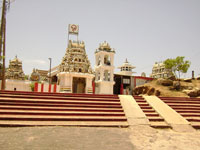
Trincomalee
The ancient port city of Trincomalee (affectionately called Trinco), on the northeast coast of Sri Lanka, has a perfect natural harbour, which has made the town a prize to be fough…
Trincomalee
The ancient port city of Trincomalee (affectionately called Trinco), on the northeast coast of Sri Lanka, has a perfect natural harbour, which has made the town a prize to be fought over by foreign powers for generations. The Danes first took the trophy in 1617 on behalf of the Dutch, but the Portuguese put up a fort and staked their claim a few years later. By the mid-17th century the port was Dutch again, until the British and French both had a turn at occupation in the late 18th century. During the Second World War the harbour was a strategic British naval base, and it is now home to the Sri Lankan Navy. The beaches in the area, especially those north of Trincomalee at Nilaveli and Uppuveli, are broad, soft and white, lapped by warm, gentle waters. The region is a popular beach resort destination for tourists, as the coastline really is very beautiful, and the natural pleasures can be combined with some good cultural sightseeing in Trinco. Among the sights to visit is Fort Frederick, built by the Portuguese, and Wellington House, once home to the Duke of Wellington. The Koneswaram Temple (or Thirukonamalai Konesar Temple), at Swami Rock, is an important medieval Hindu temple complex in Trincomalee.
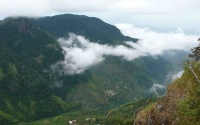
Horton Plains National Park and World's End
Located in the central highlands of Sri Lanka, Horton Plains National Park contains some of Sri Lanka's highest mountains, covered in thick forest, misty lakes, and hidden waterfal…
Horton Plains National Park and World's End
Located in the central highlands of Sri Lanka, Horton Plains National Park contains some of Sri Lanka's highest mountains, covered in thick forest, misty lakes, and hidden waterfalls. The park is one of the only parks in Sri Lanka that allows guests to hike on their own on designated trails. The park is home to many animals, including Samabr Deer, wild boar, otter, leopard, macaques and many species of bird, and exploring the trails is very rewarding. The most popular tourist attraction in Horton Plains National Park is World's End, a sheer precipice with a 2,850-foot (870m) drop at the southern boundary of the park. From the top of the cliff, visitors have a spectacular view of the surrounding hills which extends as far as the Indian Ocean, dozens of miles away, on clear days. The hike to World's End is 6.2 miles (10km) and takes roughly three hours. Visitors should note that from 9am to 10am there is usually a thick blanket of mist over the valleys that totally obscures the view from the cliff, and the best time to see World's End is early in the morning. The path can be crowded on weekends, when large groups of tourists tend to scare away any wildlife in the area.



